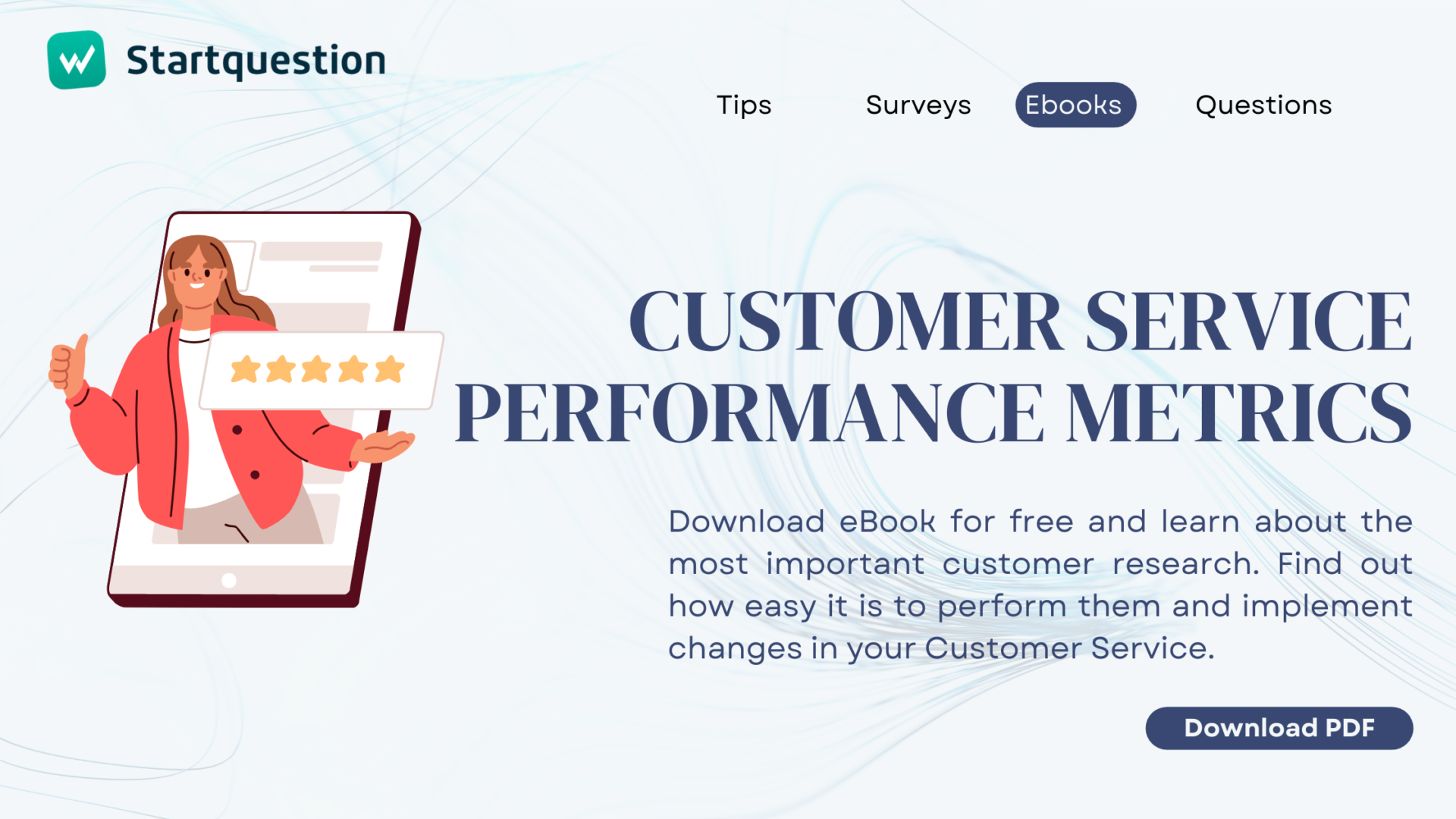Most people think that preparing a perfect survey is an easy task. But when you sit down in front of your computer, it turns out that it’s not as simple as it may initially seem. To help you understand what an ideal survey should look like, we will present you the top 10 mistakes that occur when creating questionnaires, and we will also tell you how to avoid them.
How to do a perfect survey – 10 mistakes you should avoid:
1. Proper order of questions
Mistake: In some surveys, you may notice that the rule “from general to particular” is not followed. Sometimes questions, which determine the content of the answers to the next ones are placed first or do they affect the respondent’s point of reference with the help of previous questions. Often, by placing more difficult questions at the beginning of the questionnaire, we discourage the respondent from further research.
Tip: We advise you to use the correct order of questions that best suits the respondent’s needs and makes it easier to answer them. By following the solutions below, you will avoid making mistakes:
- The first question in the questionnaire should be easy for the respondent and make them feel interested
- The order of the questions should be from the easier ones to the most difficult ones
- The questions should be related to one another so that they constantly increase the respondent’s interest and prepare them for the next question
Use ready-made survey templates for your research
2. Necessity of the question
Mistake: The questionnaires often contain unnecessary questions that do not help to solve any research problem.
Tip: Each question has a specific meaning. If you are unable to determine what the information received from the answer will be used for, the question should be rejected. There are two exceptions to this rule:
- Several neutral questions can be asked at the beginning of the questionnaire in order to prepare the respondent to answer sensitive, personal questions
- Use neutral questions to hide the purpose of the measurement or the study sponsor
3. Filtering questions
Mistake: Sometimes it happens that in the survey, the respondent faces a mandatory question that suggests their ability to answer, which not everyone, despite sincere willingness, can answer. For example: “How often do you drive a car?”
Tip: This question suggests the respondent’s ability to answer. In order to avoid such a mistake, a filtering question should be asked before this question, which allows to separate respondents who have a driving license from those who do not. Startquestion.com allows you to create various response paths. What does it mean? You can divide the questionnaire into several pages, to create paths that the respondent will navigate depending on the answers provided. To use this, we need to create 2-3 pages with questions, and then access the questionnaire editing panel. There, mark the appropriate field so that after selecting, for example, “Yes”, the respondent is redirected to page 2, and with the answer “No” either completed the study or was redirected to page 3.
Startquestion is a survey software
Gather feedback via weblink, social media, email, and more.
No credit card required · Cancel any time · GDRP Compilant
4. Scope of the question
Mistake: Including questions in the questionnaire that relate to several issues at the same time “Do you think Fiat Panda is comfortable and eco-friendly?”
Tip: The questionnaire should ask questions relating only to one scope, because the respondent may have a dilemma about how to answer clearly yes or no, if, for example, he/she thinks that the car is eco-friendly but completely uncomfortable. In this case, two separate questions should be asked.
5. Vocabulary selection
Mistake: There are questions with unclear phrases, colloquial language, ambiguous phrases, or words belonging to unpopular terminology.
Tip: The words or phrases in the question should be adapted to the level and type of education of the respondents, and if you have no influence on the selection of the study group – to the group with the lowest education degree. Specialized vocabulary should be explained using an example. In addition, sentences should be built simply and concisely so that you know exactly what is meant in the question.
6. Suggestiveness and emotionality in questions
Mistake: Some questionnaires contain questions that may unintentionally suggest answers to respondents, e.g. “Do you highly rate the newest, eco-friendly model of the Fiat Panda?”. Moreover, in this question, emotional words were used, which automatically impose a certain opinion on the subjects.
Tip: The key piece of advice is to avoid these types of questions and try to formulate them differently. You can avoid using words with strong tinge meaning such as: poor, luxury, crisis, hunger, socialist, best, etc.
7. Troublesome questions
Mistake: Surveys raise questions on sensitive topics that are very important from the point of view or research. There are also issues where respondents are required to disclose certain secrets (commercial, financial, private). Posting troublesome questions directly may make respondents feel too uncomfortable to answer them. A typical example of a difficult question is: “What is your monthly income?”.
Tip: In such cases, we recommend indirect questions that hide the real purpose of the measurement from the respondent. The easiest way is to ask the respondents about the characteristics of other people or their relationship with third parties. The respondent usually reveals his or her own opinion without being aware of it.
8. Formulating appropriate answers in closed questions
Mistake: Sometimes the questionnaires contain closed questions that the respondent cannot answer because there is no proper answer. This is mainly about cases when the question relates for instance to musical genres, and the answers contain only 4 possibilities (although everyone knows that there are definitely more).
Tip: If there are many possible answers, it is worth including space for “Own answer” when answering “Other (what?)” so that the respondent can type down his/her preference.
9. Selection of the type of question
Mistake: In many places, you can come across the wrong type of question. Where a closed question should appear, an open question is placed, and vice versa. There are also questionnaires in which the researcher sets a multiple-choice question for yes/no answers. This is a logical error that distorts the actual results.
Tip: In order to correctly choose the type of question for the expected answer, it is important to know which questions to use in which cases.
- Closed questions are easier to use for both the measurer and the respondent. They are a source of small measurement errors. First of all, they eliminate the respondent’s inability to express their opinion and give them a full selection of possible answers.
- Open-ended questions encourage the respondent to speak freely, without any conditions. Answers to open-ended questions are very diverse and unique. The disadvantage of open-ended questions is the unwillingness of the respondents to provide long written statements that have to be prepared on their own.
10. Narrow group of recipients
Mistake: It happens that surveys are aimed at a narrow group of recipients, e.g. a group of friends sets a date to go bowling or the course teacher collects feedback from participants about the classes. It is unreasonable to make this questionnaire available to all users of Startquestion.com.
Tip: All you have to do is apply the option of “sharing via link” in the survey settings. This makes it possible for your friends to answer your survey questions after receiving the link.
Summary – the perfect survey
We all make mistakes and even if all the rules are followed, it may turn out that some components of the perfect survey are incomprehensible, and some questions are left unanswered. To prevent this, it is enough to conduct a pilot survey. If the questionnaire is solved by a few people, they will provide you with valuable feedback on whether it is error-free! Test your survey creation capabilities today with a 14-day trial period!




